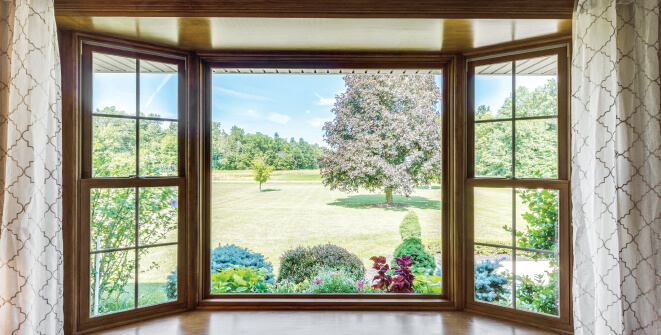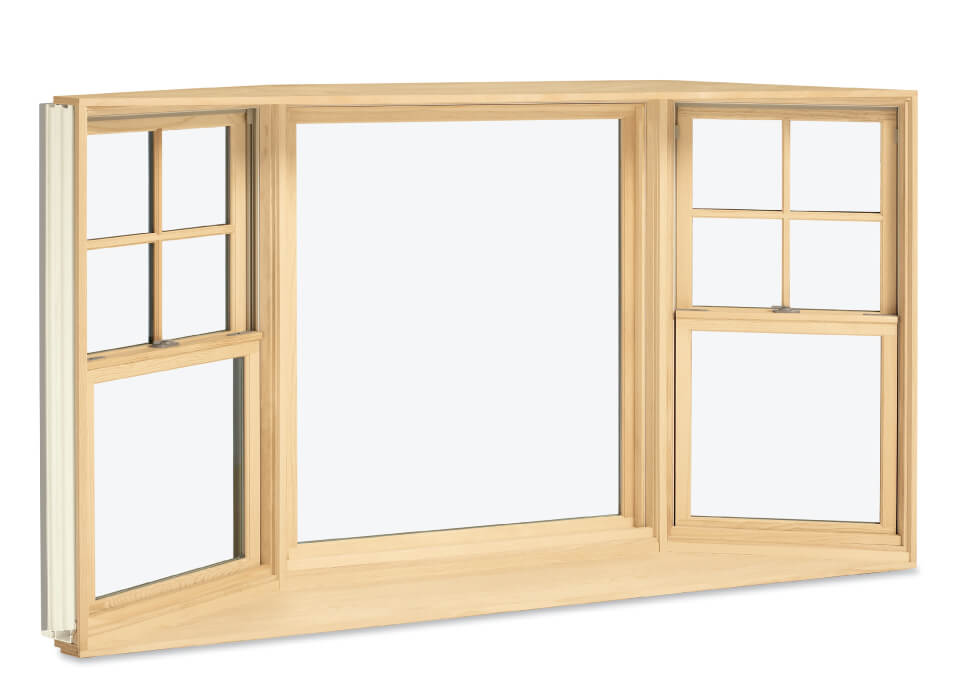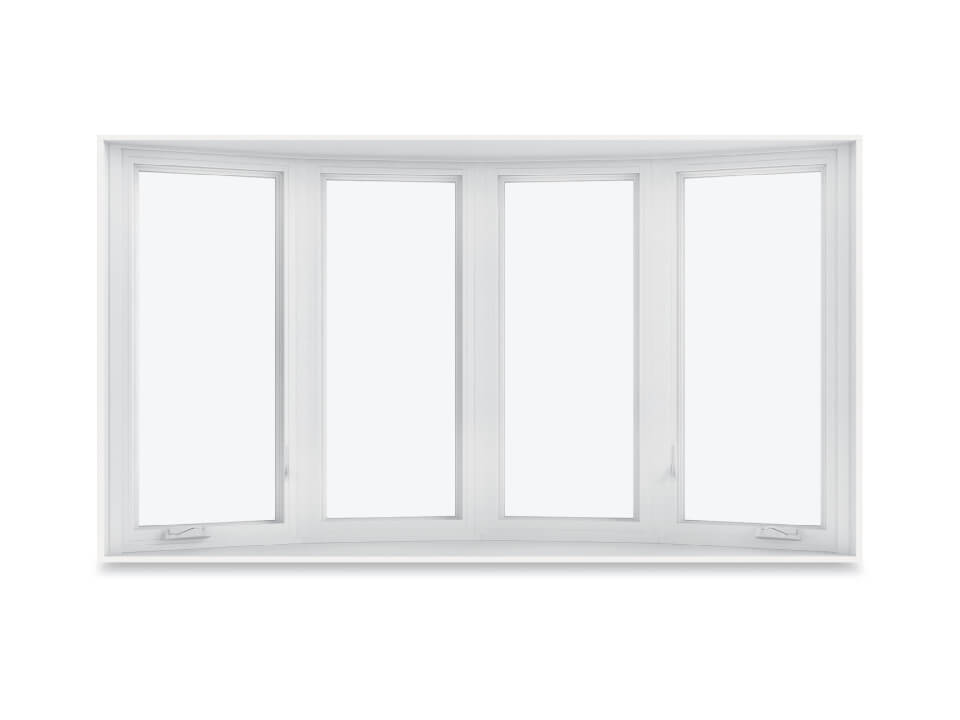Bay Windows vs. Bow Windows in
Western NY: How to Pick the Best Window

Are you considering a window installation or window replacement in your home? Bay and
bow windows offer a lovely way to boost the style and function of your living space.
These beautiful projection windows can turn any room into a bright and welcoming retreat.
Whether you’re updating existing windows or installing new ones, knowing the differences
between bay and bow windows is important.
Our friendly team will walk you through each step of replacing and installing your new
windows. We’re committed to enhancing your home’s style, energy efficiency, and comfort.
Understanding The Types of Windows
Bay windows are uniquely designed with three or more panels facing each other. The large
picture window in the middle commands attention, framing such a striking view with grace.
Casement or double-hung windows flanking the central panes can thus be opened to let
breezes cross your room.
Envision a snug window seat on your beautiful bay window, providing a cozy retreat for
reading a book or enjoying a morning coffee. Modern bay windows are designed with energy
efficiency in mind, resulting in reduced energy costs and increased comfort within your home.

Exploring Bow Windows
On the other hand, bow windows present an elegant, graceful arc with four to six
panels, creating a gentle curve. These windows extend beyond your home’s walls,
inviting more daylight and offering panoramic views. Bow windows, usually fixed,
offer a beautiful way to enjoy the view outside. These windows create a stunning focal
point in any room, letting you admire the landscape from the comfort of your home.
If you have large walls, bow windows can be a great choice to make your room look even
more beautiful. They offer amazing views and help you feel more connected to the nature
around you. Sitting by your bow window, you can enjoy the scenery and feel like you’re
bringing the outdoors inside, making your space cozy and inviting.
Choosing Perfect Windows for Your Home
Choosing between bay and bow windows can be an exciting journey, especially
when you know what you want. Bay windows with operating panels are perfect for those who
love fresh air and want excellent ventilation. Bow windows could be your perfect match
if you want to enjoy expansive views and let in lots of natural light.

Find Your Perfect Window Style With Expert Guidance in the Greater Buffalo Area
Bay windows offer a classic look, while bow windows add a touch of elegance
to your home. Planning is key when choosing the right windows for your space. For those in
the Greater Buffalo area, our skilled window installation professionals are ready to handle
the structural framing of your window replacement.
Just imagine how these windows can make a big difference in your home. Let them turn a cold
room into a warm retreat, not only due to aesthetic values, but also by adding much-needed
energy efficiency to your home and keeping it comfortable throughout the year. Let our window
experts help you decide on just the right complement to your home’s style and your needs.
Begin Your Window Journey With Confidence
Bay and bow windows can significantly boost your home’s energy efficiency,
keeping it cozy all year round. Our friendly experts in Buffalo are ready to assist you in
selecting the perfect windows to fit your home’s style and needs. Start an exciting window
replacement journey with us that will transform your home’s look and efficiency. With each window
installation, every step is designed to enhance the beauty and functionality of your space,
reflecting your taste and lifestyle.
Enhance Your Home With Stunning Bay and Bow Windows in WNY
No matter which one you choose, at Big L Windows & Doors, we pride ourselves on
making sure the installation of bow and bay windows goes off without a hitch. These stunning windows
enhance your space’s visual appeal and bring in natural light, creating a warm and inviting atmosphere.
Discover the joy of bringing your vision to life with standout windows that make a real impact. Enjoy
a transformation that adds beauty, comfort, and value to your home. Contact us today! We’ve got you
covered every step of the way.



